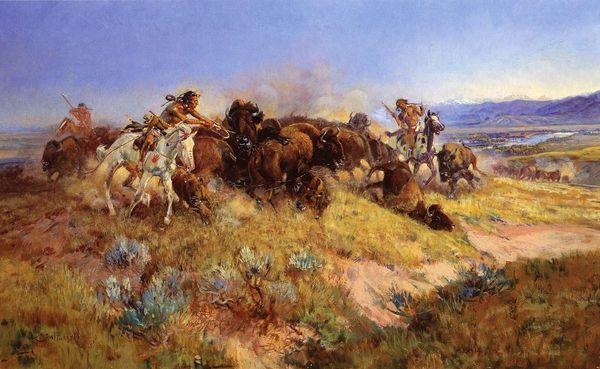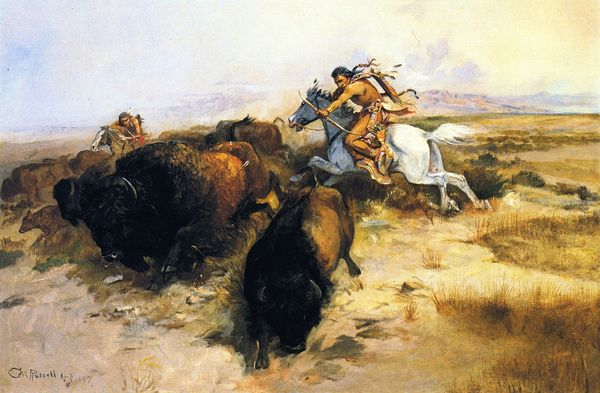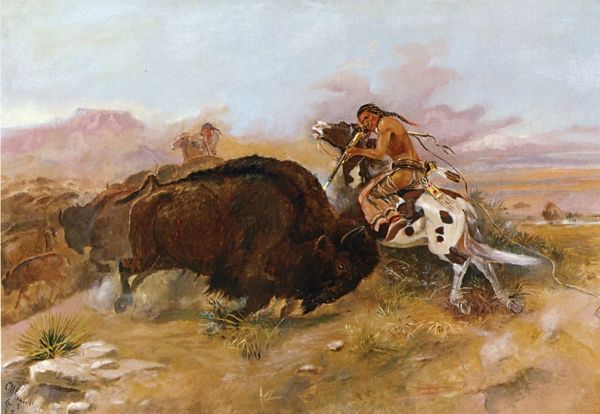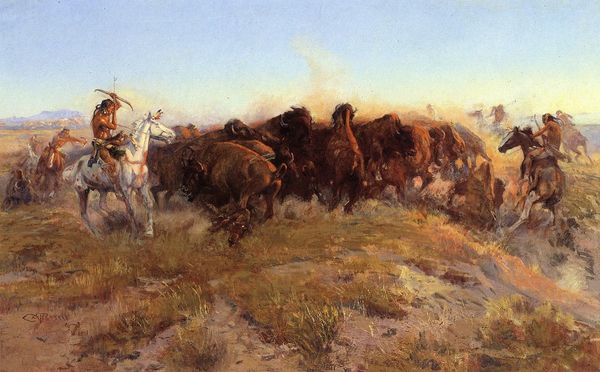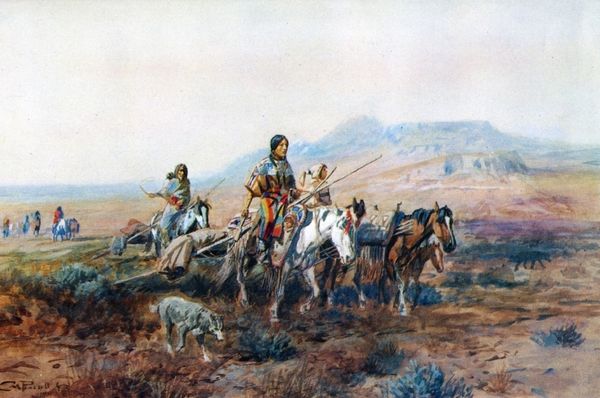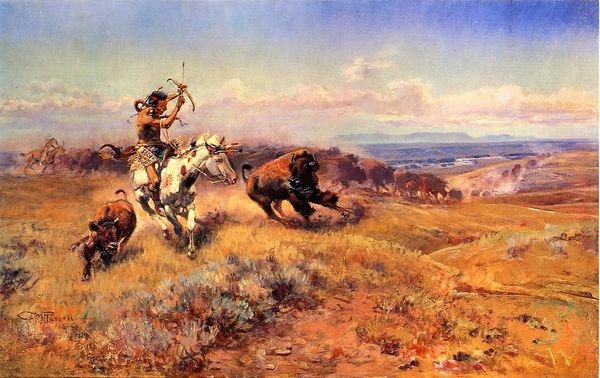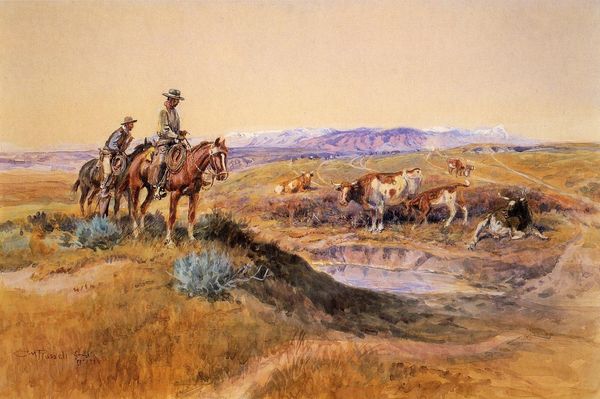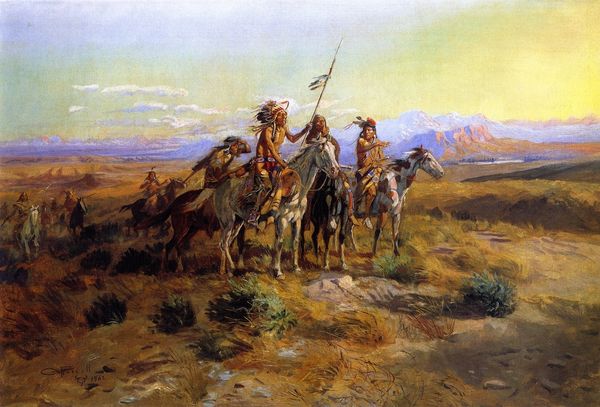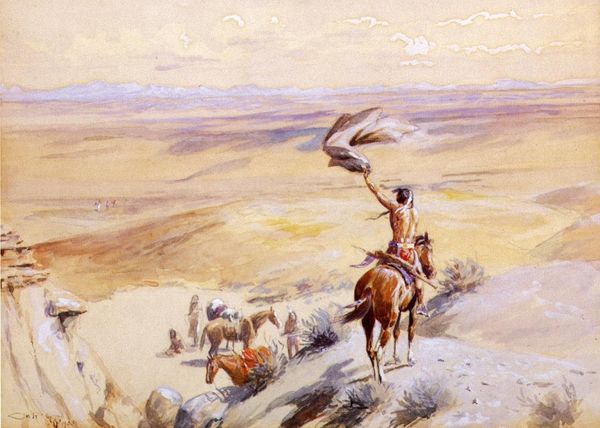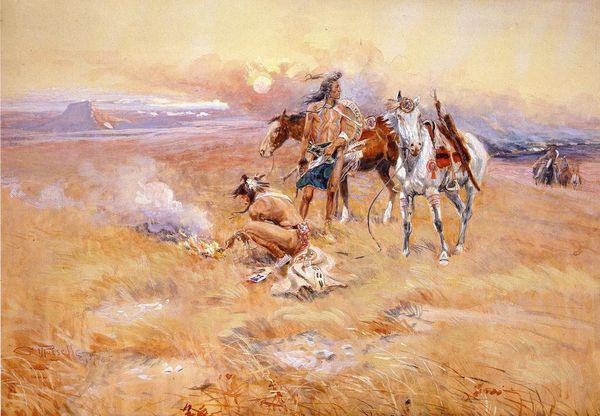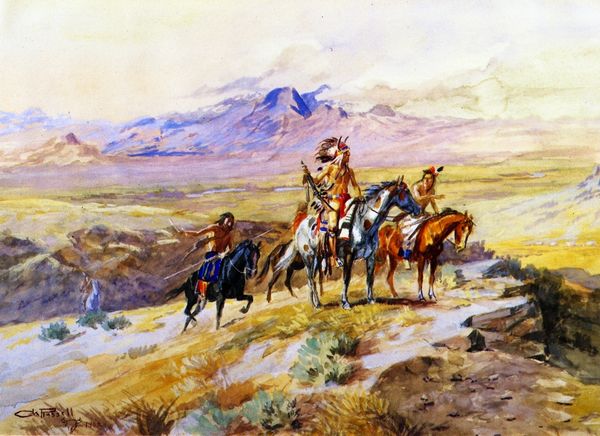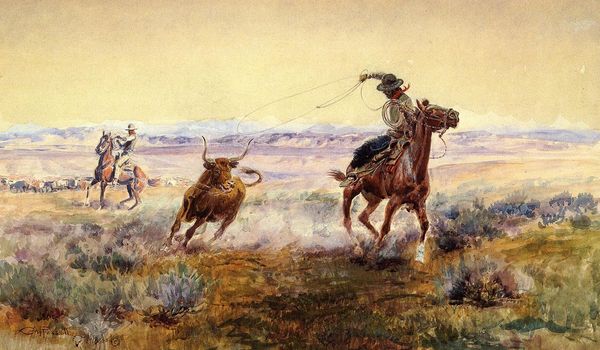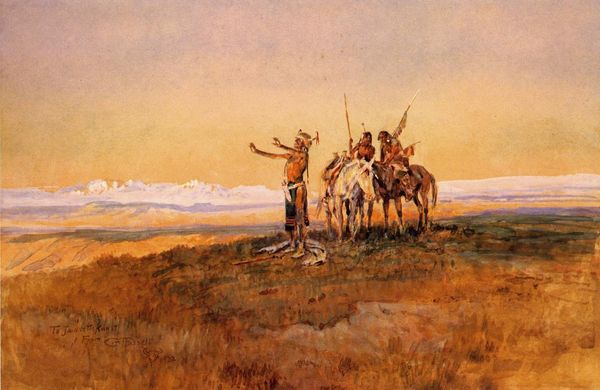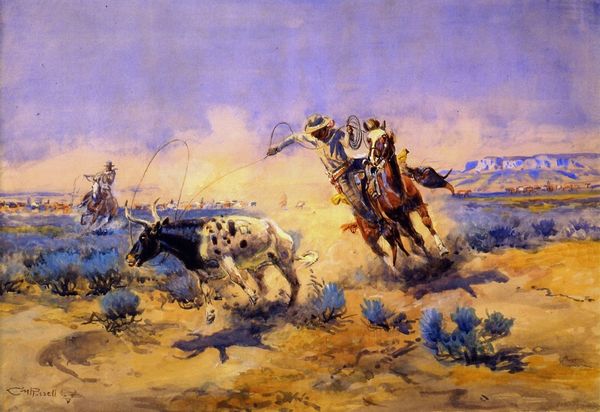
painting
#
narrative-art
#
painting
#
landscape
#
figuration
#
oil painting
#
watercolour illustration
#
watercolor
Copyright: Public domain
Curator: What a striking image of the American West. We’re looking at Charles M. Russell’s watercolor and oil painting, "The Buffalo Hunt," created in 1903. Editor: My initial reaction is tension, real visual tension. The frantic energy of the hunt practically vibrates off the surface. Curator: Absolutely. Russell was a master of depicting motion. Notice the way he captures the dust and the blurred legs of the buffalo, using both oil and watercolor techniques. How do you think this particular method served him? Editor: Using a medium such as watercolor lends a fluidity that emphasizes the impermanence of the hunt, while also reflecting the traditional methods used by Indigenous artists. It serves as a reminder of what was at stake as buffalo herds faced decimation through westward expansion. What does the painting's use of materials communicate about broader artistic trends of its time? Curator: During this period, a growing tension existed between romanticizing the West and portraying the realities faced by Indigenous communities. Russell straddled both worlds. He understood the demands of the art market while deeply respecting the traditions he witnessed. His engagement with commercial art, like illustrations and advertisements, provided financial security while also allowing him to insert these scenes into popular culture. Editor: Yes, situating this image within a political framework, what does this genre painting suggest about power relations and land disputes? Curator: By choosing the buffalo hunt as his subject, Russell engages with crucial debates about land use, ownership, and sustainability. The painting documents not only a hunting technique, but also highlights the ecological impact of settlers. Editor: Right, his work isn't merely about aesthetics or historical accuracy, it's also a visual statement loaded with sociocultural implications concerning human interactions with the natural world. Considering that aspect, it demands attention from contemporary conversations concerning decolonization. Curator: Agreed. This is so much more than simply a historical scene. Thanks for framing it in such an expansive, yet thoughtful way. Editor: My pleasure. These visual dialogues challenge us to critically evaluate what we think we know, prompting crucial intersectional perspectives and fostering essential re-examinations about art, life, and societal frameworks.
Comments
No comments
Be the first to comment and join the conversation on the ultimate creative platform.
